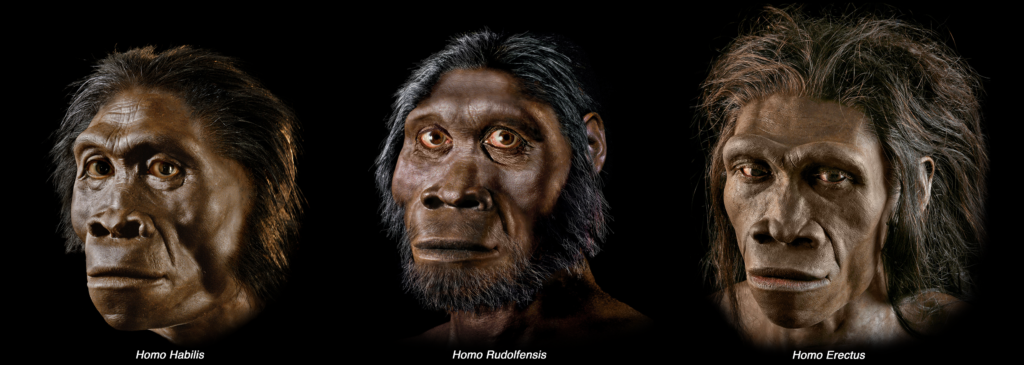
Since the Pliocene (5.3 million-2.6 million) all the way to the Pleistocene (2.6million — 11,600 years ago), at least six different species of Homo roamed the Earth. All but one went extinct and, according to a new study led by researchers at the Università di Napoli Federico II in Italy, climate change was to blame for their ultimate downfall. In the context of intensifying anthropogenic global warming, these findings serve as a stark warning.
“The picture of a live drama”
For their new study, the researchers led by Pasquale Raia of Università di Napoli Federico II examined an extensive fossil database spanning more than 2,750 archaeological records. Their primary goal was to see how early humans reacted to changing climates over the last 5 million years, but much to their surprise, they found that all species besides Homo sapiens eventually reached a point in time when they simply couldn’t adapt anymore.
“Extinct Homo species went through a sudden, abrupt drop in the variability of climates they were able to survive in just before extinction only at that moment. When we tested whether global change made them vulnerable compared to Homo sapiens, we found climate change is the culprit for the drop. The initial goal of the study was to understand how Homo species adapted to climate change, we didn’t expect to find anything like that,” Raia told ZME Science.
Raia and colleagues looked at records that involved six species of early humans: H. habilis, H. ergaster, H. erectus, H. heidelbergensis, H. neanderthalensis, and H. sapiens. Virtually all of them were widely distributed and employed sophisticated tools. In the case of Neanderthals and modern humans, we know for a fact that these species also employed complex cultural practices, advanced tools such as glued spear points, and wore clothes.
This is why the anthropologists expected these species to have a relatively constant climatic niche relative to their evolutionary climatic niche. Every terrestrial species has a realized climatic niche, which is the set of large-scale temperature and precipitation conditions where that species occurs. But the results of this analysis suggest that H. erectus, H. heidelbergensis, and H. neanderthalensis lost a significant portion of their climatic niche just before going extinct. For Neanderthals, this environmental pressure due to sudden changes in the global climate was made worse by competition with H. sapiens.
“The first time I saw the plot of average climatic niche width against time, my colleague Mirko Di Febbraro, who produced that plot for Neanderthals, called me on the phone and said: ‘Pas, I’ve shared the plot via mail with you. I’m sorry man, it makes no sense, it is completely random except for the last moment, there should be something wrong there,’ to which I retorted: ‘nothing wrong bro, that moment is the picture of a live drama, we have found something!'” Raia told ZME Science in an email.
While there are inherent uncertainties in paleoclimatic reconstructions, the researchers believe that their findings show that climatic conditions were simply too extreme for these extinct species just before the timeline of their extinction. “When they went extinct, it was just too much of climatic change for them, more than they had to withstand in their lifetime,” Raia said.
It’s not clear why humans survived while all our other relatives perished. Perhaps we had superior technology or perhaps we were just lucky. Needless to say, today we are in the midst of a new, sudden shift in the global climate.
The world is nothing like it was during the Pleistocene, and that’s largely owed to our activity that has extensively altered the landscape and biosphere.
In our arrogance, we often place ourselves outside the natural world. However, that’s poor, misguided judgement. We are all part of an interdependent ecological system, and when a tipping point is reached, the entire system can crumble. Our close extinct relatives weren’t necessarily less intelligent than us, yet they perished.
The message is pretty clear: climate change sounded the death knell for our ancestors. These findings, which appeared in the journal One Earth, shouldn’t be taken lightly.
For the moment, Raia is busy with other research destined to reveal spicy new details about the ancient lives of our ancestors.
“We have a new paper out for iScience right now, showing that cultural modernity in humans could be as much as one million years old, that’s terrific!” he said.





